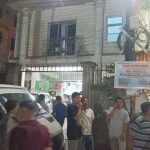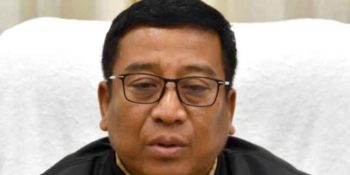Imphal: Manipur Legislative Assembly on Tuesday resolved to establish a dedicated House Committee to detect and deport illegal immigrants from Manipur.
The resolution was adopted as proposed by chief minister N. Biren Singh, giving his statement in response to a calling attention motion raised by NPF MLA Leishiyo Keishing.
The move was also supported by the opposition leader Okram. Ibobi, who suggested inclusion of members from all communities.
MLA Leishiyo highlighted the lack of a concrete national policy to tackle illegal immigration. He criticised the Indian Foreigner Act for inadequacies in dealing with the issue effectively.
He said in Kamjong district 6,199 illegal immigrants were detected out of Manipur’s total of 10,590, the MLA expressed concerns that the actual numbers could be higher.
“These illegal immigrants, blending into the local populace, are not only impacting the demographic fabric but also affecting local job markets by accepting lower wages.”
He pointed out that biometric data collected for these immigrants are only utilised during passport or Aadhaar card applications, making detection and monitoring difficult due to shared ethnic and linguistic backgrounds.
He informed the House the numbers of illegal immigrants as per reports in various districts: 2,409 in Tengnoupal; 1,895 in Chandel; 150 in Churachandpur; 11 in Imphal West; six in Kakching; three in Ukhrul; two in Kangpokpi; and one each in Imphal East, Thoubal, and Bishnupur districts.
Claiming that the actual numbers are much higher, he cited the recent shifting of 2,000 illegal immigrants from Kamjong district, who were not reflected in the data of any districts.
“Where have they gone?” The MLA asked.
“How India could have around 11 million illegal immigrants despite the existence of the Indian Foreigner Act of 1946?”
Illegal immigration has become a global issue. Countries like China and South Korea, with strict immigration policies, have significantly lower numbers of illegal immigrants, the MLA said.
He recalled a statement from the Union MoS for Home in 2021, which outlined various Comprehensive Integrated Border Management System (CIBMS) measures, including infrastructure development and security enhancements in border areas. Unfortunately, none of these measures are visible in Manipur’s border regions, he said.
The MLA stressed the need for proper roads and other facilities in border areas to facilitate 24/7 monitoring by security personnel and suggested an exclusive designated home for illegal immigrants away from local residential areas in Kamjong district, with all basic amenities, to prevent illegal immigrants from loitering around.
Illegal immigrants are threads to national security. They increase criminal activities, organised crime, terrorism, increase in law-breaking and corruption, demographic shifts, political map changes, and economic strain, he said.
It is unfortunate that some sections of society view efforts to tackle illegal immigration as targeting specific communities, he said emphasising that illegal immigration affects all communities, he added.
Biren said around 40 percent of Manipur’s population, including some members of the House, are unaware of the impacts of illegal immigration.
He estimated Manipur’s indigenous population at around 30 to 35 lakhs and stressed the need for collective understanding and action.
“If there is no illegal immigration issue in Manipur, I am even ready to accept a hang-to-death penalty,” Biren declared, highlighting the gravity of the ongoing crisis between those who understand the consequences of illegal immigration and those who deny its existence.
Biren also produced satellite imagery showing significant changes in a specific area between 2006 and 2018, which caught the attention of PM Modi and Home minister Amit Shah.
This led to the formation of a Cabinet Sub-Committee, led by minister Letpao Haokip, and a bureaucratic committee to detect illegal immigrants, he added.
Highlighting government efforts to curb illegal immigration, the chief minister proposed the formation of the House Committee as part of ongoing initiatives.











